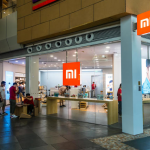The Latest Trends in Automotive App Development in 2024
The automotive world will move to another level as car manufacturers across the globe will bring the most advanced technologies to provide a comfortable, secure, and connected user experience. Due to recent developments, Android automotive app development is on top of the list, representing the best software solutions for vehicles. Along with AI integrations and augmented reality experiences, the modern app development trends are sure to take us to a new level of how we end up interacting with our vehicles. This intro is devoted to the top three trends: IoT integration, smart charging, and enhanced cybersecurity, that are reshaping our mobility future. The demand for intelligent, connected vehicles is on the rise, and Android automotive development is the paradigm in the formation of the automotive sector of the future.
Overview of Automotive App Development
Automotive manufacturing is on the verge of a tremendous innovation and transformation propelled by technological advancements and app development is a crucial part of this change. To expand their footprint, Indian corporate entities, just like a vehicle software solution, are implementing the latest tech innovations.
These automotive app development companies in India are on the edge of this automotive technology, reading the future automotive trend, and deploying mobile platforms to provide a seamless user-friendly experience, super connectivity solutions, and additional safety features. Such a reality will involve not only navigation and entertainment, car diagnostics wireless functioning, but the options will grow endlessly. This guide discloses the rapid canvas of automotive app development, teaches the major participants, and discusses the bulging trends that are going to be the future of mobility.
What is Automotive App Development?
Automotive app production includes writing the code for apps that improve the driver’s experience. Most of these apps can be accessed through a mobile device linked to the car dashboard or already installed in the car’s infotainment system. These horizons are a function and essence of such a development as they, for example, control movement as navigation, and entertain and carry communication.
Automotive application developers are masters in applying technologies like AI, IoT, and AR to create enhanced experiences for users; to increase safety, and to improve the connectivity between users and their vehicles. Autonomous car app development is about enhancing driving aspects and smart features such as remote control and diagnostics. In this case, app development will be a crucial thing in the current driving system’s modernization.
The Latest Trends in Automotive App Development :
The introduction of new technologies to the automotive space is eating into the app development dynamics in the industry. Developers are not holding anything back from introducing AI to reaping the benefits of AR and VR. New interfaces are being tested to improve customer experience, safety, and convenience. On top of these, connected vehicles, information technology, and the anticipated rise in the use of EVs is the source of innovation in vehicle management systems. However, aside from these advancements, there is a growing realization of the necessity of upholding user data and vehicle systems security to maintain security. We shall go into detail about every one of these trends since they are quite important and show the overall effect on the automotive industry.
1. Artificial Intelligence Development in Automotive Features
AI completely transforms the way auto apps are built by supporting smart features that improve driving sensation and enhance vehicle control. By the way, AI takes the driving activities from ADAS to the personalized in-car assistants, the automotive apps are reconstructing the way we drive with the cars. These apps utilize machine learning techniques that rely on data gathered from diverse sensors and sources including speed and stability to make discoveries and take necessary measures hence boosting predictive maintenance, adaptive cruise control, and autonomous driving abilities.
In addition, AI-empowered language conversations and natural language processing (NLP), allow the exchange of information and assistance (which will be personalized) between the drivers and their vehicles.
2. Augmented Reality (AR) And Virtual Reality (VR) Applications For Enhanced User Experience
The automobile industry is being changed through AR and VR technologies because it allows users to experience the world in new ways by using those technologies for better engagement and convenience. Automotive apps are utilizing this technology in providing heads-up displays (HUDs), which superimpose navigational warnings, safety advice, and real-time information against the driver’s field of view, thus minimizing the possibilities of distractions.
VR apps become prospective customers’ toolkits to feel driving with their own customization choices right in their homes. Furthermore, AR-enabled maintenance guides make the do-it-yourself repairs easy and quick, so we can easily service our vehicles, hence saving downtime.
3. Integrated IoT And Connected Car Technology
The blending of automotive and digital ecosystems powered by car-connected technologies and IoT integration is leading to a scenario of ubiquitous connectivity and data exchange between vehicles, devices, and cloud platforms. The car apps with the help of IoT sensors and telematics deliver real-time data about cars’ performance, location, and driving behavior, which makes possible to remote monitoring, diagnosis, and predictive maintenance possible. Furthermore, the connected car technologies made it possible for manufacturers to make over-the-air (OTA) software updates so that they could deliver new features, security patches, and performance enhancement to the vehicles, thereby prolonging their life and adding value to the system.
4. The smart EV (Electric Vehicle) Charging Management System
Most of the global transport systems are being powered by renewable energy and the load-carrying capacity depends on electric vehicles (EVs) and related facilities. Today, through dedicated apps for EV users, car apps are becoming indispensable tools for EV adoption as they provide inclusive management systems that address range anxiety, charging accessibility, and energy conservation.
Thus, the apps show the locations of the stations in real-time, availability, and prices, which facilitates EV owners to plan the routes for their travel and to schedule the charging stops during their trips. Additionally, EV management apps provide the driver with a remote control allowing for battery status surveillance, energy consumption tracking, and vehicle performance analysis, in turn, helping to improve efficiency and minimize the operation expenses.
5. Enhanced Security Measures in Automotive Applications
The future car will be more interconnected with the surroundings, the smartness is more the better. Hence, hackers always find a way and attack the car’s vulnerable spots and unprotected data. With auto apps, makers are taking a step further in terms of security with the highest encryption protocol, biometric authentication, and intrusion detection systems to stop any intruder.
Also, Secure communication protocols and secure boot mechanisms, therefore, are used to facilitate data transmission and system integrity while preventing unauthorized attempts to breach security measures. Smart automotive app developers prefer cybersecurity as this prioritizes creating trust and confidence in users to miss any security issues in driving.
Conclusion
The automotive app development industry is going through a tsunamic transformation, created by the rapid adoption of AI, AR/VR, IoT, and EV solutions, and added security. They also reshape human-vehicle interactions like experience, safety, and interactivity. The custom software and app development companies’ abilities to innovate contribute to the automotive industry where technology is gradually gravitating towards a better approach of merging with driving thereby, creating a smarter, safer, and cleaner driving experience.














